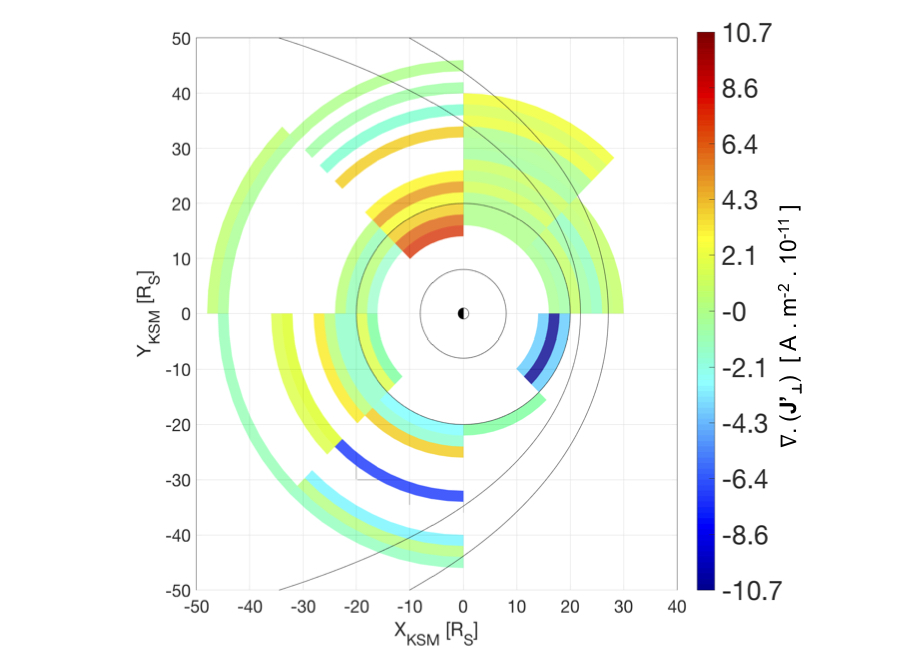MIST
Magnetosphere, Ionosphere and Solar-Terrestrial
Current Density in Saturn’s Equatorial Current Sheet: Cassini Magnetometer Observations
by Carley J. Martin (Lancaster University)
Saturn’s rapidly rotating magnetosphere forms an equatorial current sheet that is prone to both periodic (i.e. flapping, breathing [see MIST nugget by Arianna Sorba]) and aperiodic movements (i.e. Martin & Arridge [2017]).
Although the current density of the sheet structure has been discussed by many previous authors, the current density in the middle to outer magnetosphere has not been fully explored. To this end we analysed aperiodic wave movements of Saturn’s current sheet, determined using Cassini’s magnetometer observations. The data were fitted to a deformed current sheet model in order to estimate the magnetic field value just outside of the current sheet, plus the scale height of the current sheet itself. These values were then used to calculate the height integrated current density.
We find a local time asymmetry in the current density, similar to the relationship seen at Jupiter, with a peak in current density of 0.04 A/m at ~ 3 SLT (Saturn Local Time). We then used the divergence of the azimuthal and radial current densities to infer the field-aligned currents that flow out from the equator pre-noon and enter the equator pre-midnight, similar to the Region-2 current at Earth. This current closure could enhance auroral emission in the pre-midnight sector by up to 11 kR.
Overall, the results provide important information into the asymmetries of the current sheet, and the characteristics of the current sheet suggest important field-aligned current systems that shape Saturn’s auroral emissions.
For more information, please see the paper below:
Martin, C. J., & Arridge, C. S. (2019). Current density in Saturn's equatorial current sheet: Cassini magnetometer observations. Journal Geophysical Researcher: Space Physics, 124, 279–292. https://doi.org/10.1029/2018JA025970

Figure: Divergence of height-integrated perpendicular current density (which infers the field-aligned current density). The coloured blocks show the average value of the divergence projected onto the X-Y plane in KSM (Kronocentric Solar Magnetospheric) coordinates. A range of magnetopause positions is shown using Arridge et at. (2006) along with the orbits of Titan (20 RS) and Rhea (9 RS), all shown in grey.